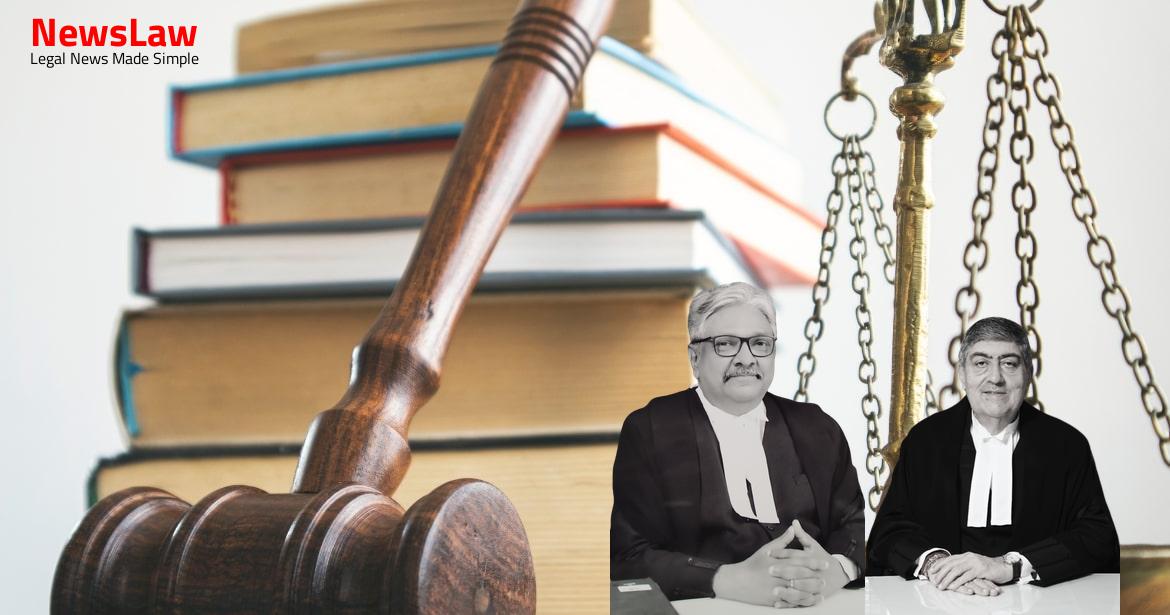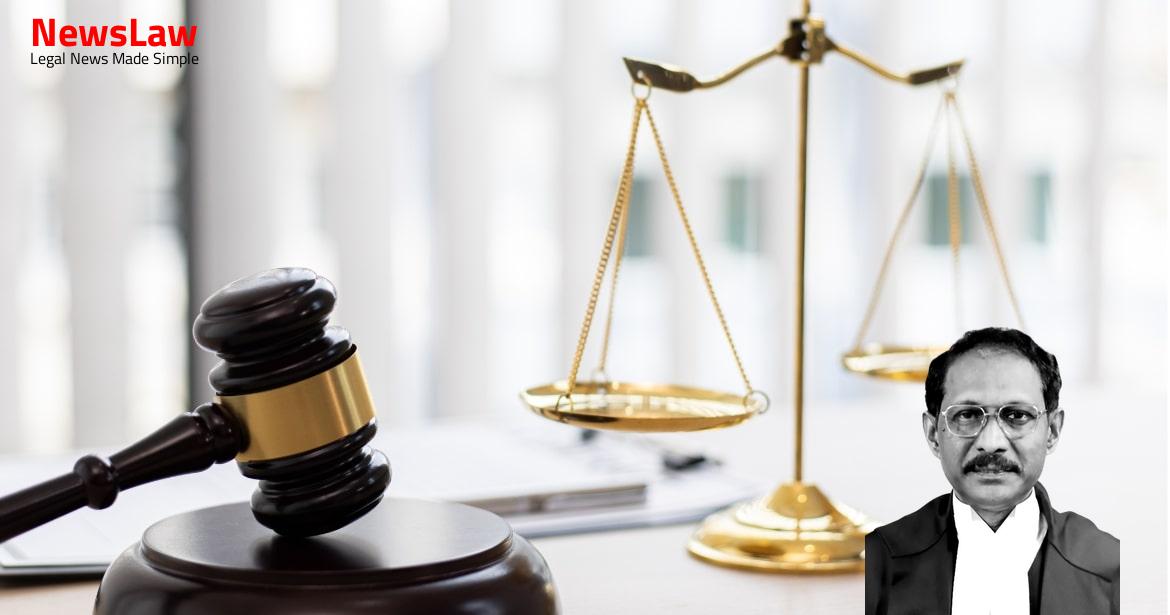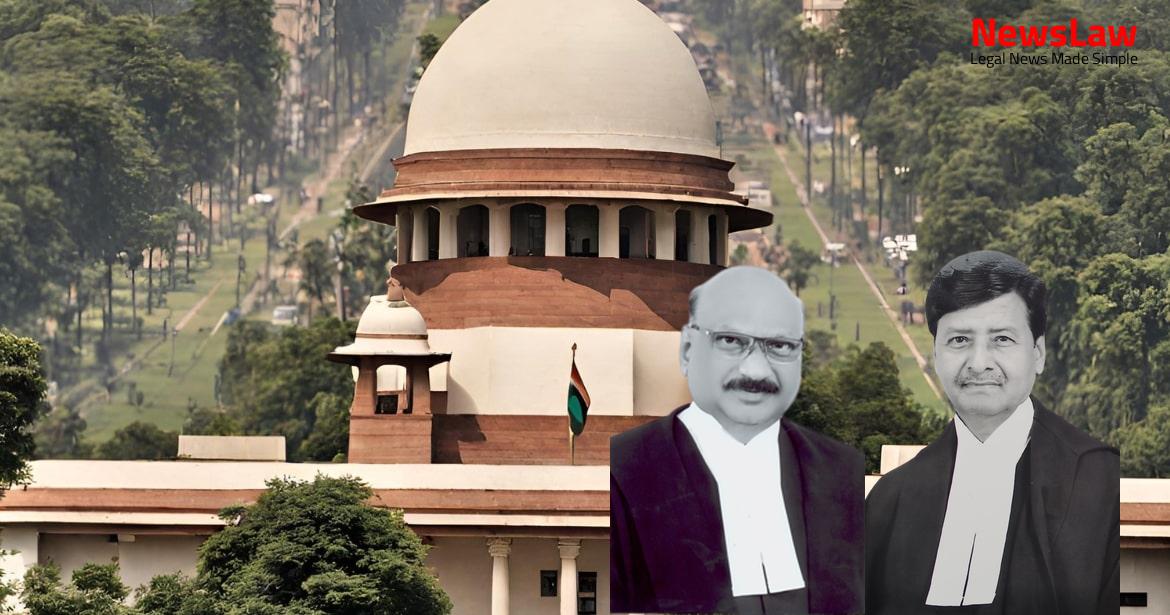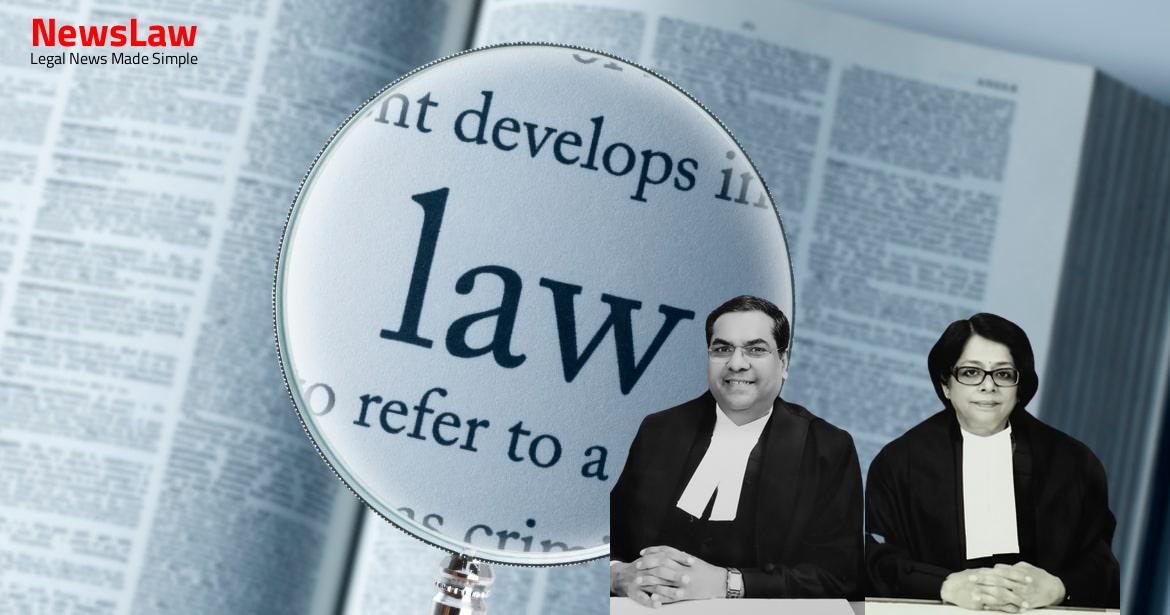Delve into the legal analysis of Hindu joint family and succession laws in a recent court case, where the court delves deep into concepts like disruption of joint family status, vested interests, and the applicability of the Hindu Succession Act. This blog post aims to unravel the complexities of property rights, partition decrees, and the nuances of legal interpretations that govern familial relationships and inheritance under Hindu law.
Facts
- Both plaintiffs are appellants in the case, reserving rights in separate action for properties
- Plaintiffs are sons of Lakshmiah Naidu, widow of Ramaswamy Naidu is also a plaintiff
- Defendants include R. Krishnammal, widow of Rangaswami Naidu
- The suit filed by the respondents was dismissed
- Oral partition in 1932, followed by compromise terms in the suit
- Rangaswami Naidu, a legislative counsel member, developed throat cancer
- Allegations of joint possession of properties after R. Krishnammal’s death
- Multiple legal actions filed challenging decrees and property rights
- Contentions regarding life estate, vested remainder, and joint possession
- Reference to will, partition, and properties within the family
- Various appeals and decrees leading to partition & declaration of title
- The court found that there was no evidence to reveal on what basis defendants 1 to 4 have acted regarding the compromise in regard to the properties sold and item acquired by the Government.
- The High Court applied Section 14(1) of the Hindu Succession Act, 1956.
- The First Appellate Court allowed the appeals filed by the appellants and decreed partition as claimed by dividing the property into four parts.
- The High Court in the second Appeals found that the Will could not be relied upon as the requirements under Section 68 of the Evidence Act were not fulfilled.
- The Trial Court concluded that the claim of oral partition of properties in 1932 could not be accepted.
- The Appellate Court found that Section 14(2) of the Hindu Succession Act was applicable in this case.
- The Appellate Court found that Section 69 of the Evidence Act applied when both attesting witnesses to the Will were dead.
- The Court found that a disruption in the status of the Hindu undivided family occurred due to a publication in a newspaper on 10.5.1955.
- The High Court distinguished a judgment in Sadhu Singh v. Gurdwara Sahib Narike and Others.
- The First Appellate Court agreed with the Trial Court that there was no oral partition as claimed between Rangaswami Naidu and Lakshmiah Naidu.
- The issue of parties not being made part of the order was raised, as R. Krishnammal had a pre-existing right to maintenance.
- The court concluded that Rangaswami Naidu did not die joint but separated from the Hindu Undivided Family.
Also Read: Analyzing Legal Reasoning in a Poisoning Death Case
Issue
- Section 33 of the Evidence Act is relevant in proving the truth of facts stated in a previous judicial proceeding.
- Evidence given by a witness in a judicial proceeding can be used in a subsequent proceeding if certain conditions are met.
- Relevancy of evidence under Section 33 depends on the parties involved, their representatives, the opportunity to cross-examine, and the similarity of questions in issue.
- Explanation given in Section 33 clarifies the application of the rule to criminal trials or inquiries.
- The cause of action in a specific suit is outlined based on events that occurred, establishing the timeline of events that led to the suit.
- The question of when a severance in status is deemed to have taken place arises, questioning whether it is the expression of intention or the knowledge of other members.
- In cases where both attesting witnesses are deceased, the attestation requirement under Section 63 of the Indian Succession Act must be proven.
- The requirement of proving attestation by two witnesses remains even if both attesting witnesses are deceased.
- The court directed each party to bear their own costs in the suit and ordered the 1st defendant to pay the plaintiff’s costs.
- A compromise decree was reached instead of adjudication, outlining the terms agreed upon by the parties.
- The relief sought in the suit included declarations of ownership, possession of certain properties, recovery of specific amounts, division of properties, and appointment of a Commissioner for the same.
- The suit was contested by defendants 1 to 4 similar to their defense in previous proceedings.
Also Read: Interplay of CrPC and Drugs Act: Legal Analysis
Arguments
- The appellants argue that the communication issued by Lakshmiah Naidu corresponds to Exhibit (43) and (44) in the Section 145 proceedings, demonstrating compliance with the legal requirement for division in the joint family status.
- The appellants assert that even if B1 is considered, it only signifies a separation of status, not a full partition by metes and bounds.
- They contest the claim that R. Krishnammal had the authority to compromise based on Section 14(1) of the Hindu Succession Act.
- The appellants challenge the validity of the Will, claiming it was not proven in accordance with the law.
- They argue that the primary relief sought by R. Krishnammal in OS No.71 of 1958 was rooted in the right granted by the Will.
- The appellants further emphasize that the Will was only produced during the Section 145 proceedings, post the death of Rangaswami Naidu, and thus did not fulfill the legal requirements for communication to all coparceners.
- A contention is made that the right established by the Will was abandoned in 1974 and reaffirmed in 1981, implying estoppel, acquiescence, and waiver.
- The reliance on the communication dated 16.05.1955 as issued by Rangaswami Naidu is crucial for the appellants to support their case.
- The appellants also argue that the alleged division in the Hindu Joint Family was ineffective without a full partition by metes and bounds.
- They point out that the suit filed by R. Krishnammal in OS No.71 of 1958 was compromised, where she conceded rights to some properties in favor of the sons of Lakshmiah Naidu.
- The recital about a division in the joint family due to the execution of a Will is refuted as false and unfounded.
- Arguments about linking the sentence with an earlier partition in 1932 are not persuasive.
- Contesting whether the Will achieved a division before the death of the testator, and its validity based on the Doctrine of Relating Back.
- Challenges to the absolute title claimed by R. Krishnammal and the validity of the compromise decree granting her the title.
- Contentions regarding the life interest conferred on Krishnammal becoming absolute post a specific Act in 1956.
- Allegations of false recitals in the Will regarding an oral division and illegalities related to property transfers.
- Issues of survivorship and succession concerning the husband’s share reverting to specific parties.
- Legal battles and disputes over property rights post the demise of key individuals involved.
Also Read: Legal Analysis of Lease Deed Commencement Date
Analysis
- The Hindu law texts and court decisions suggest that severance in status is effected by a clear and unilateral declaration of intention by a coparcener to separate from the joint family and enjoy their share separately.
- The manifestation of this intention must be communicated to the other affected members of the family.
- Possession of property by a female Hindu, either before or after the Hindu Succession Act came into force, is a crucial factor in determining the applicability of Section 14(1).
- The concept of division in status implies separation in interest and in right, even if an actual division of property does not immediately follow.
- Various cases and judicial interpretations discuss the nuances of possession, declaration, and intention in the context of Hindu joint family and succession laws.
- The concept of disruption of joint family status by a coparcener’s unequivocal declaration is well-established in Hindu law and judicial precedents.
- The Privy Council considered the concepts of partnership in the Appovier v. Rama Subba Aiyan case.
- They referred to the Bhagwant P. Sulakhe case taken by this Court.
- The issue of partnership was highlighted and resolved in the Bhagwant P. Sulakhe case.
- The letter of Rangaswami Naidu dated 16.05.1955 was crucial as it confirmed B1 advertisement.
- It was concluded that the act of Rangaswami Naidu was not a unilateral act of declaration and did not change the joint family character of the properties.
- Section 14 of the Hindu Succession Act 1956 states that any property possessed by a female Hindu shall be held as full owner and not limited owner.
- If members of an undivided family agree to divide a specific property among themselves, the joint ownership is removed, and each member has a defined share.
- Vested interest is created when a property transfer specifies the time for it to take effect or explicitly states its immediate effect.
- Section 5 of the 1937 Act defines ‘die intestate’ and provides rules for property distribution in case of intestacy.
- The Act also specifies the widow’s entitlements in the case of intestacy based on different Hindu legal schools.
- A Will requires attestation according to the Indian Succession Act, and if an attesting witness is available, the Will can be proved.
- Section 69 of the Evidence Act addresses the proof of a document when no attesting witness is found.
Decision
- Schedule II properties to be divided into 4 equal shares
- One share to be allotted to the plaintiff
Case Title: V. KALYANASWAMY (D) BY LRS. Vs. L. BAKTHAVATSALAM (D) THR. LRS. . (2020 INSC 455)
Case Number: C.A. No.-001021-001026 / 2013



